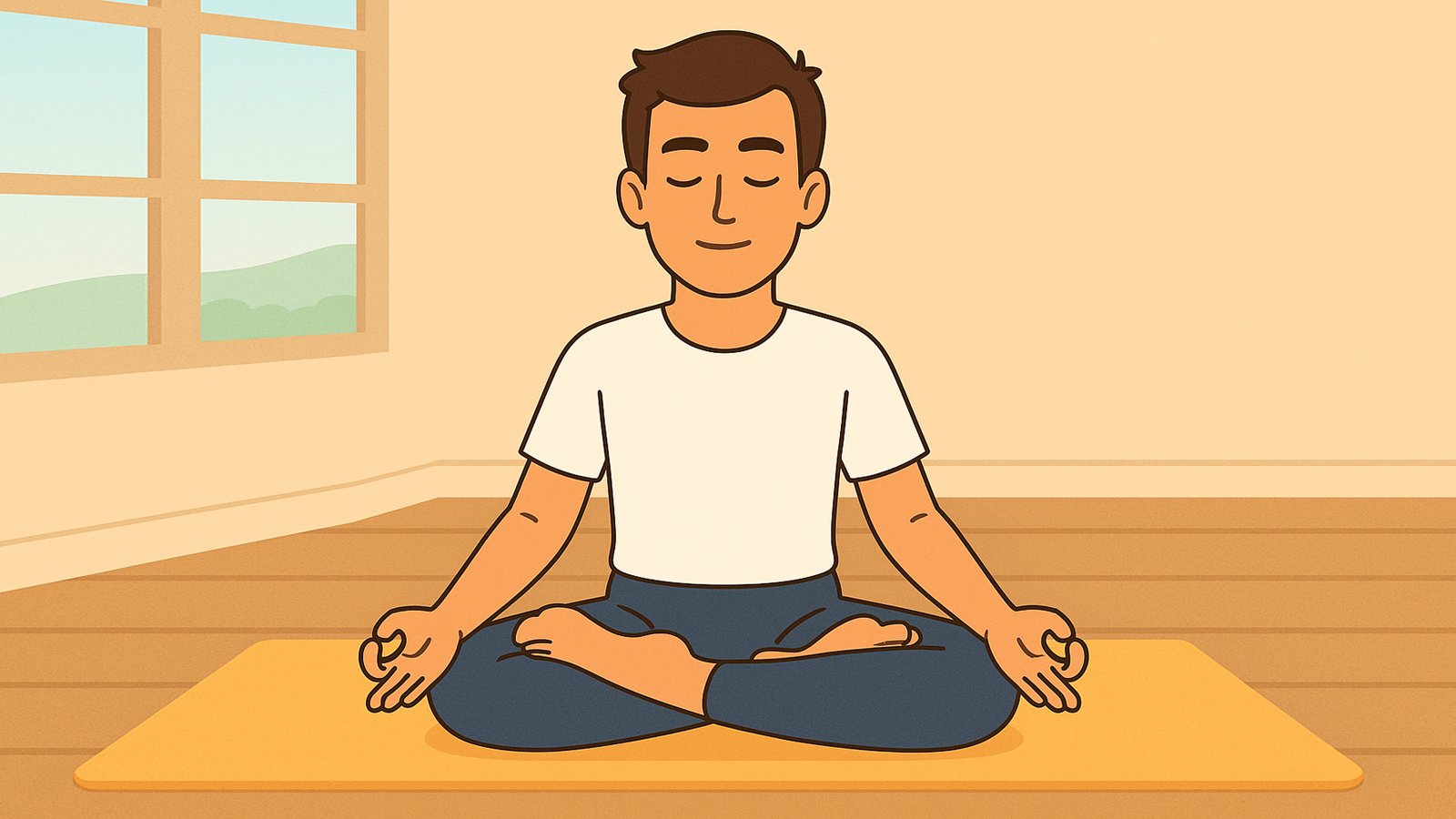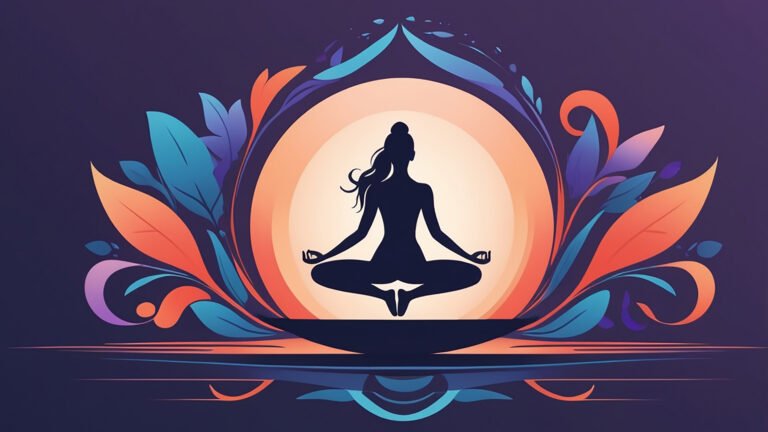— Introduction —
Padmasana, (पद्मासन) or Lotus Pose, is one of the most well-known seated postures in yoga. It symbolizes inner peace and spiritual awakening. Due to its grounding nature and ability to promote stability of body and mind, it is traditionally used for meditation and pranayama practices.
— Step-by-step Instructions —
- Sit on the floor or on a yoga mat with legs stretched straight in front of you (Dandasana).
- Bend the right knee and gently place the right foot on top of the left thigh.
- The sole should face upward, and the heel should be close to the abdomen.
- Bend the left knee and carefully lift the left foot over the right leg, placing it on the right thigh.
- Again, the sole should face upward, and the heel should be close to the abdomen.
- Adjust both knees to rest comfortably on the ground, with the soles facing up and the spine erect.
- Place both hands on the knees in Gyan Mudra (thumb and index finger touching, other fingers extended).
- Close your eyes and relax the entire body.
- Breathe deeply and evenly. Maintain the posture with stillness.
- Hold the pose as long as comfortable, starting with a few minutes and gradually increasing the duration.
- To release, gently remove one leg at a time and return to the starting position.
Note: Depending on flexibility, you can also begin with the left leg over the right thigh.
— Physical Benefits —
- Deeply opens the hips and stretches knees and ankles
- Improves flexibility in lower body joints
- Helps in developing good posture and spinal alignment
- Tones the abdomen and stimulates the digestive organs
- Improves circulation in the pelvic region
— Mental & Emotional Benefits —
- Induces a calm and meditative state
- Balances the mind and reduces anxiety and agitation
- Enhances concentration and mental clarity
- Supports spiritual focus and inner awareness
— Precautions to keep in Mind —
- Avoid Padmasana if you have knee, ankle, or hip injuries.
- Those with sciatica or lower back issues should approach this posture with caution or consult a qualified teacher.
- Do not force your legs into position; the knees are especially vulnerable if the hips are not yet flexible.
- Pregnant women should consult their healthcare provider before practicing.
— Beginner’s Tips —
- Warm up your hips, thighs, and knees with preparatory stretches.
- Start with Ardha Padmasana (Half Lotus Pose) to gradually build flexibility and stability.
- Use a folded blanket or cushion under the hips to reduce strain and support spinal alignment.
- If holding the pose is difficult, try shorter durations and slowly increase as comfort develops.
- Practice mindfulness of breath and posture, rather than striving for perfection in form.
— Best Time to Practice —
- Early morning or evening
- Always on an empty stomach
— Advanced Variations —
- Baddha Padmasana (Bound Lotus Pose):
– In this variation, after assuming Padmasana, reach both arms behind the back and clasp the toes of opposite feet.
– This enhances chest opening, shoulder flexibility, and concentration. - Yog Mudrasana (Psychic Union Pose):
– From Padmasana, bend the torso forward and bring the forehead or chin to the floor while keeping the legs in lotus position.
– This deeply stimulates abdominal organs and is used in advanced pranayama and meditation practices. - Utpluthi Padmasana (Tolasana or Lifted Lotus Pose):
– From Padmasana, place the palms beside the hips and lift the entire body off the ground using arm strength.
– This strengthens core muscles and arms, and develops strong mental focus. - Padmasana in Headstand or Shoulderstand:
– Advanced practitioners may incorporate the lotus leg position in inversions like Sirsasana or Sarvangasana.
– These require exceptional hip flexibility and balance.
— Wrapping Up —
Padmasana is not just a seated posture; it is a powerful gateway to inner stillness and spiritual focus. Though it demands patience and flexibility, consistent practice gradually leads to ease in the pose. As the body becomes stable and the breath rhythmic, the mind naturally settles into a state of calm awareness. Whether for meditation, breath control, or simply self-discipline, Padmasana holds timeless value in yogic tradition. Beginners are encouraged to honor their current level, progress mindfully, and embrace the journey toward mastery with devotion and discipline.


